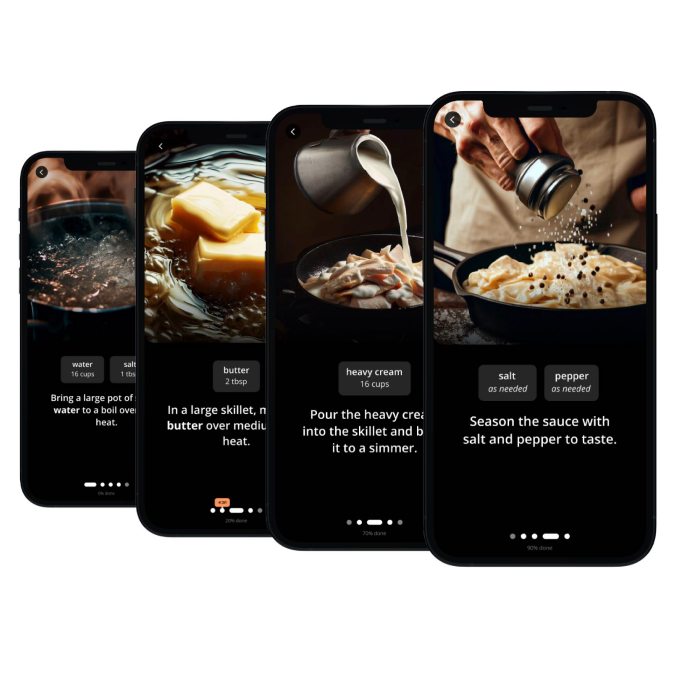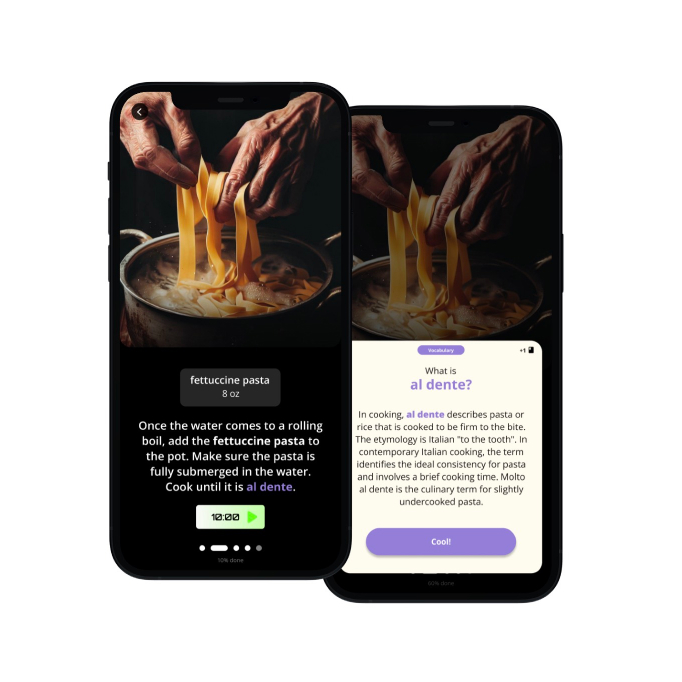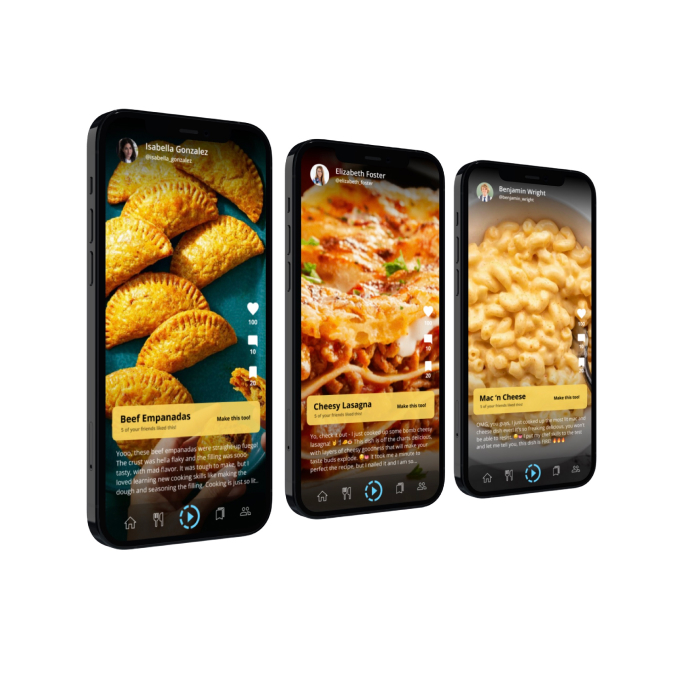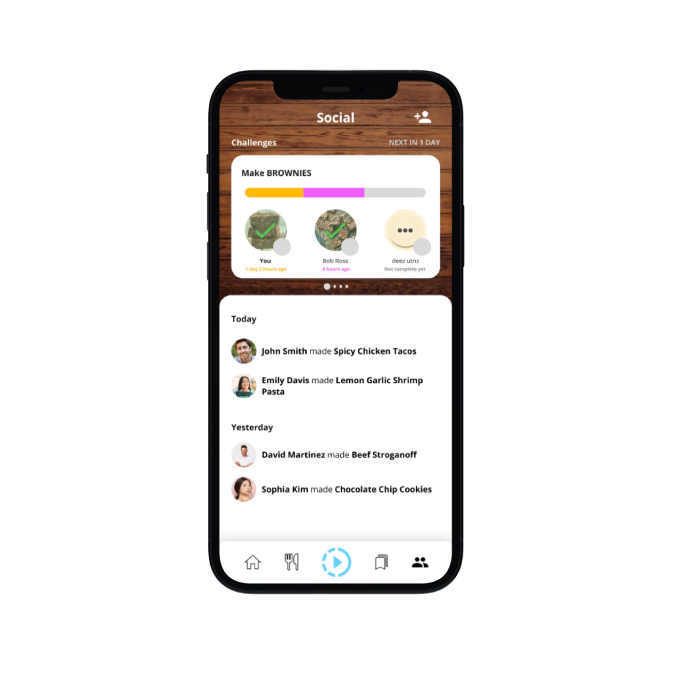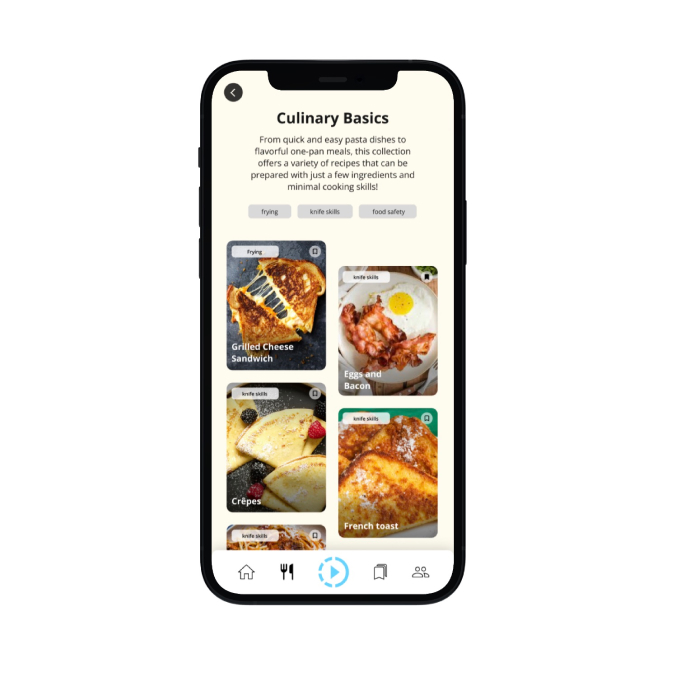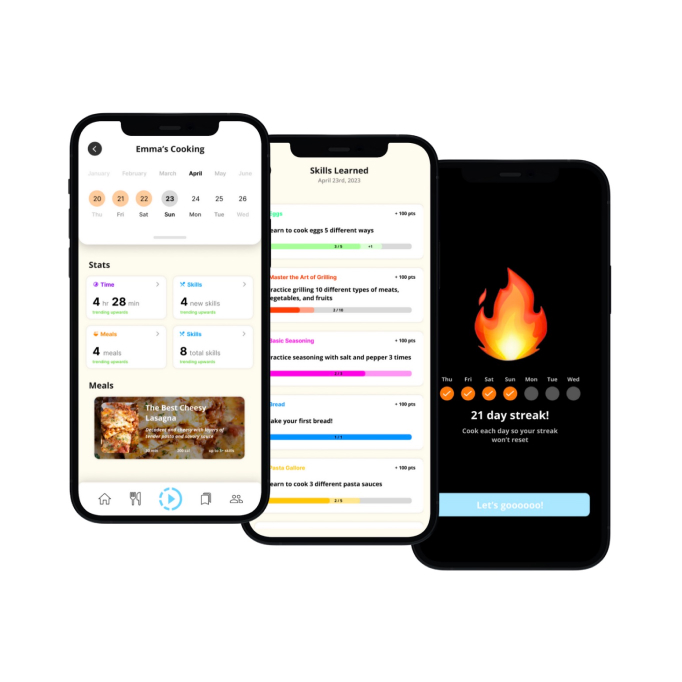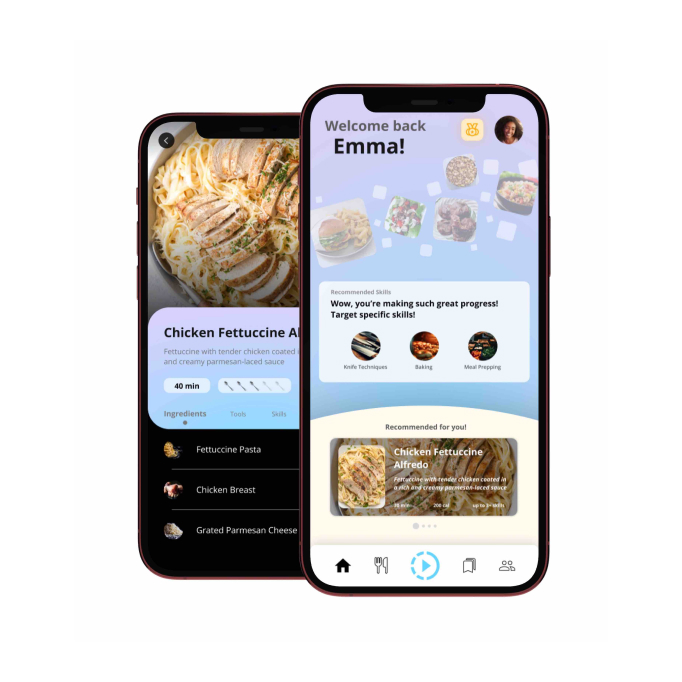
SkillfulSpoon
educational cooking mobile application backed my educational technology research to help young teenagers and young adults build self-sufficiency by teaching cooking skills, terminology, and recipes
Problem Space
Learning to cooking is oftentimes a skill marked by the age transition from kids to young adults. However, young adults usually depend on a parental or guardian figure which not everyone has, and knowledge absorption further depends on their qualifications as an effective teacher. However, the importance of these skills become more apparent as teenagers continue to grow. Difficulties in preparing healthy, nutritious meals once they move on to college or the workforce can limit their ability to cook for themselves, leading to a reliance on processed or unhealthy foods. This heightens the likelihood of increased expenses and poor health outcomes down the road. Furthermore, despite its significance to an individual's independence, this gap represents a large problem in the transfer of knowledge.
This project seeks to tackle the obstacles faced in cooking knowledge acquisition and transfer by experts to learners. The primary audience are 14-18 years who want to learn how to cook but have little to no experience or want to learn new cooking skills or recipes. A viable solution seeks to minimize the knowledge transfer obstacles in an effective educational cooking environment.
Background Research
“Short Videos Addressing Barriers to Cooking with Vegetables in Young Adults: Pilot Testing”
The study tested the use of short informational videos to improve the healthy eating habits of young adults, specifically focusing on teaching the benefits of eating vegetables and how to prepare and cook them. The study found that the videos were effective in motivating participants to cook vegetables and improving their understanding of cooking them. Conceptualizing recipes was identified as a key enabler in this process. The importance of knowledge-centered learning was highlighted, providing a deeper understanding of the benefits of healthy eating. Overall, this study emphasizes the need for accessible and informative resources to encourage healthy eating habits.
Cook-EdTM: A Model for Planning, Implementing and Evaluating Cooking Programs to Improve Diet and Health
The research paper introduces the Cook-EdTM model, a comprehensive cooking education model that includes curriculum, implementation, and evaluation guidelines. The model aligns with the learner-centered approach by evaluating the learner's understanding before teaching. The paper suggests conducting assessments to analyze gaps in current knowledge and process and post-learning evaluations to gauge knowledge acquisition. While the Cook-EdTM model is a great starting point for developing a cooking education program, it does not consider external factors such as socioeconomic status and food access, which could limit the learner's context. The importance of considering these factors is highlighted for developing a more inclusive and effective cooking education environment.
Simply Good Cooking: Online Curriculum for the Interactive SNAP-Ed Classroom
The research study evaluated an online-based curriculum called Simply Good Cooking (SGC) that integrated hands-on activities. The SGC curriculum was designed to help community nutrition educators teach students how to shop for ingredients, watch cooking skill demonstrations, and practice cooking for themselves. The curriculum included interactive components to engage participants and improve their learning experience. The study found that the inclusion of interactive activities improved participants' self-confidence in cooking healthy meals, their general food-related behaviors, and their food/health-related knowledge. This study highlights the effectiveness of online-based curriculums with hands-on activities in improving participants' cooking skills and knowledge of healthy eating.
Theory of Change
One of the key takeaways from our research is the lack of assessment-centered cooking learning environments. This is partially due to the nature of cooking as an activity rather than an assessment-focused skill. Additionally, having a mix of theoretical practice, where users learn theoretical information, combined with opportunities to get hands-on time practicing cooking skills and preparing recipes is the most effective way to teach users.
WIth this in mind, the design direction we have decided to pursue is a similar experience to the gamification experience of Duolingo. Not only will this platform be highly accessible to teenagers, but through its gamification it will motivate our target group to learn on a regular basis. We also want to implement a feedback system for users based on their learning, similar to Duolingo, as most existing cooking platforms are poor assessment-based learning environments.
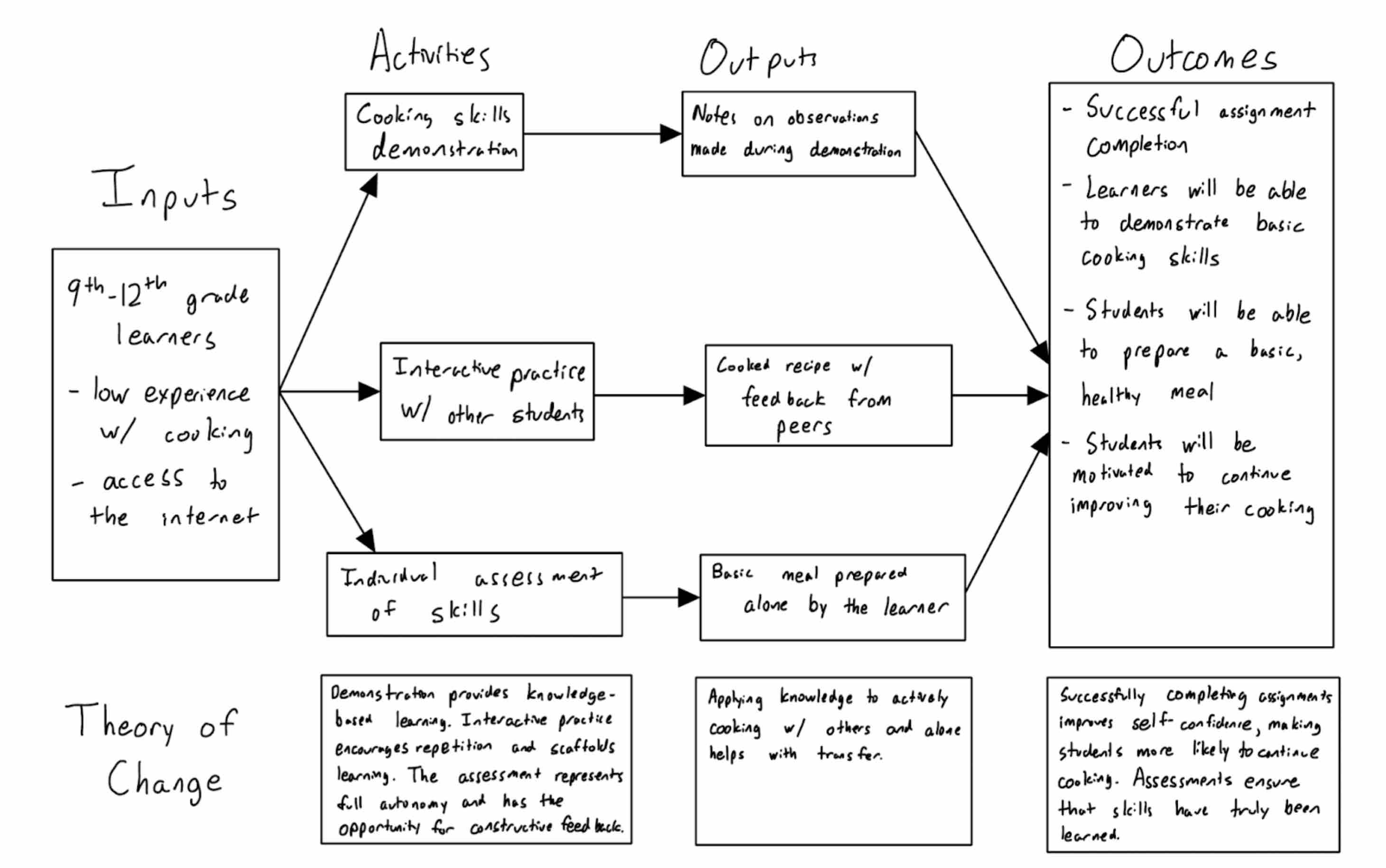



Prototyping Poster
As of our class, we designed a physical poster to present to our peers and professors. The poster highlights the key insights supporting our design specifications and requirements, alongside our final solution to our problem space.
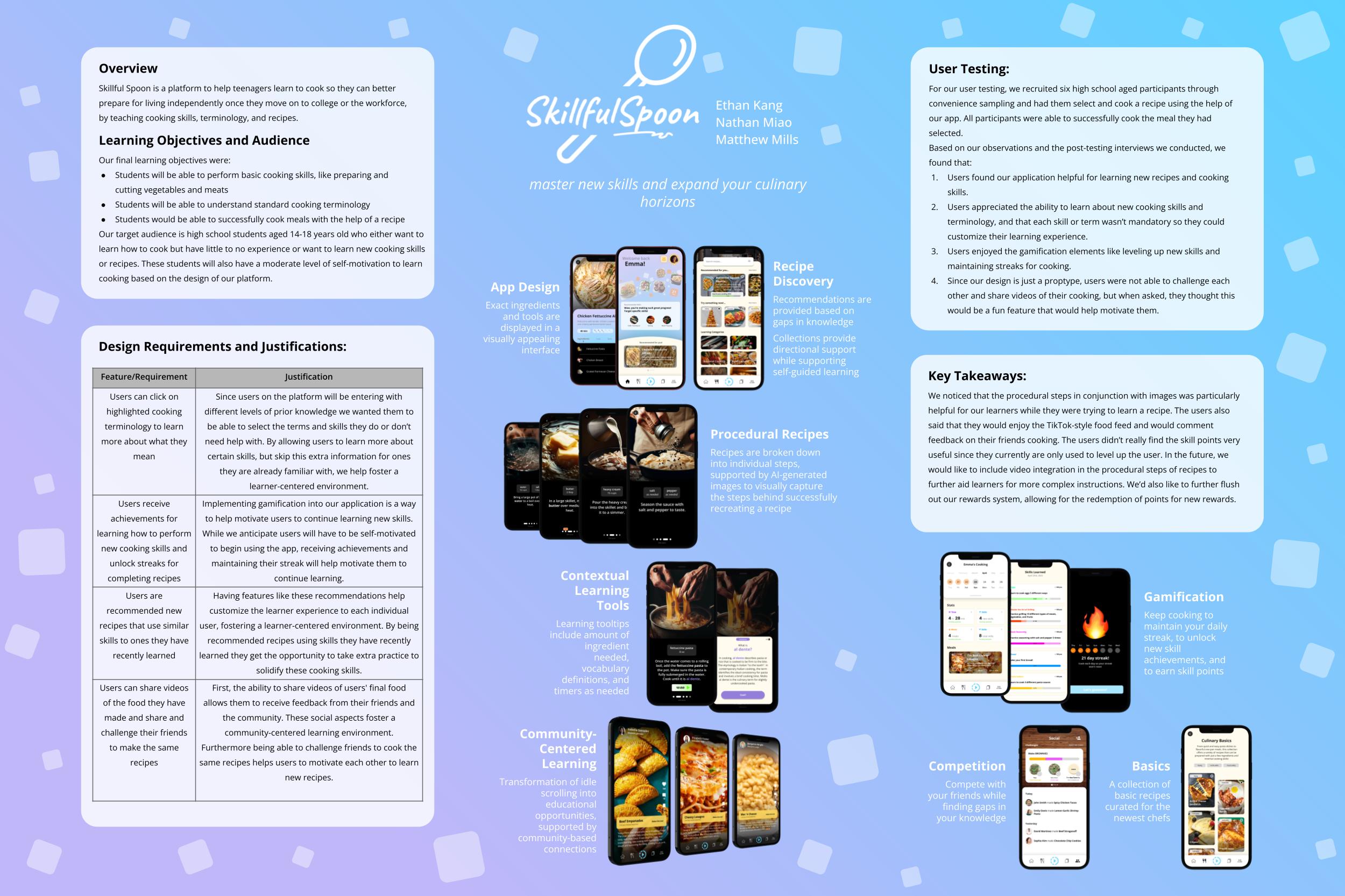
Our Solution
Our final solution was a unique recipe smartphone application that breaks down recipes into visual, step-by-step instructions made possible by artifically generated images. Contextual clues in each step minimize the amount of phone interactions needed to better understand new concepts. Gamification alongside community features encourage consistent practice and social learning. This solution is backed by concepts from How People Learn (HPL).
User Interactions and Interface Design
Reflection
This project was an interesting deep dive into the educational technology and cognitive research that goes behind developing our modern forms of education. The visual aspects of our solution was well-received by teaching staff and our peers, receiving 'Best Presentation' for our cohort - encompassing the user interface design and presentation poster.
Next Steps



Learning Outcomes
Educational Technologies
This was my first opportunity to apply course concepts into a finalized design project. Driving design with well-meaning and scientifically supported evidence was very interesting.
User Interface Design
As the primary designer for our prototype, this project pushed my abilities to combine both functional and visually appealing components into a well-rounded design. I always appreciate these opportunities to identify my own weaknesses and improve upon them.
Presentation
Our work culminated in a final presentation which involved both a poster as well as pitching our solution to our peers. Creating a convincing argument and supporting our claims in questioning was an important skills to learn.
You've reached the end!
Feel free to explore my other projects!
